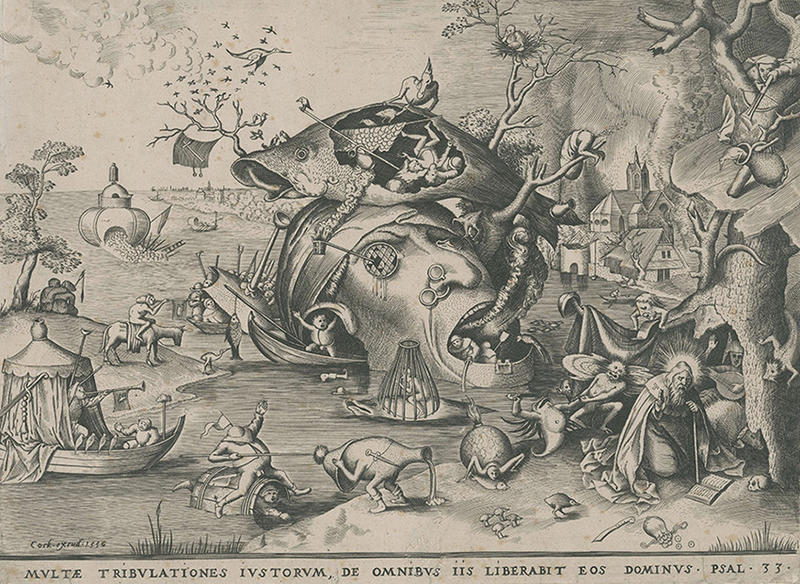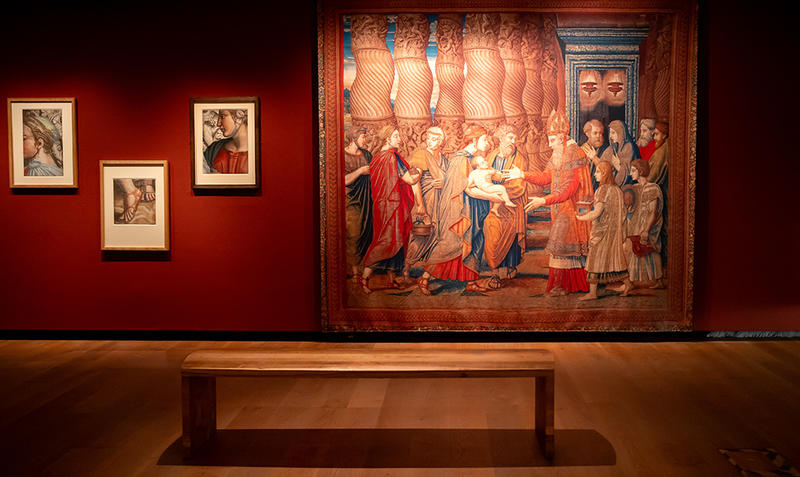The majority of drawings which have survived from the 16th and 17th centuries were made as designs for other artworks.
These design drawings could be for paintings, prints, sculptures, tapestries, stained glass windows, silver objects, and for temporary decorations and even architectural elements. From quickly-sketched early ideas to highly worked-up presentation drawings to be shown to the commissioner for approval, these works reflect the different stages needed for the design processes.
For instance, Rubens’s Nude Male Torso served as a figure study for one of the men lifting the cross in his famous altarpiece now in Antwerp Cathedral, The Raising of the Cross. We can imagine Rubens instructing a burly dock worker in his studio to take on the exact pose which he needed for the final painting.
They were mostly made on a smaller scale than the final work (in order to save time and materials), however print and tapestry designs had to be done in the same size because they were passed to specialist craftsmen in order to transfer the design on to the final products.
One exceptional early print design is by Pieter Bruegel, The Temptation of St Anthony. The hermit is seen praying in the lower right corner, trying to ignore the demons surrounding him and attempting to distract him from his faith.
This drawing was used by a professional printmaker to copy the composition onto a copper plate to be printed (below).
Similarly, four small roundels by the Antwerp artists Maerten de Vos served as models for metal plaquettes to commemorate the Liberation of Antwerp from the Spanish army in August 1577. The outlines in the compositions, illustrating different stages of the negotiations and the capture of the citadel, are incised with a sharp pen.
This was done in order to transfer the design on to the metal artworks. Extraordinarily, the Ashmolean also holds the corresponding plaquettes, cast in lead.
Jan van der Straet spent most of his career in Florence working at the Medici court (under the name of Stradano), but continued to proudly refer to himself as Flemish, being born in Bruges. A colourful arched sheet represents an allegory of the Peace of Cateau-Cambrésis in 1559, ending the 65-year-long wars between France and Spain.
The Spanish king Philip II is seen triumphant in this design for a temporary decoration to be erected on the occasion of the Joyous Entry of his governor in Italy, his cousin Joanna of Austria.
Much larger even in scale are tapestry cartoons, which were used by the weavers and therefore had to be the same size as the monumental tapestries themselves. Because of their impractical size, only fragments have nowadays survived, usually of notable details such as heads (Head of a Woman).
In the Ashmolean’s exhibition, for the first time the six tapestry cartoon fragments are united (of heads, feet and even a bucket containing a dove) related to a tapestry woven in Brussels for the Vatican, The Presentation in the Temple.








